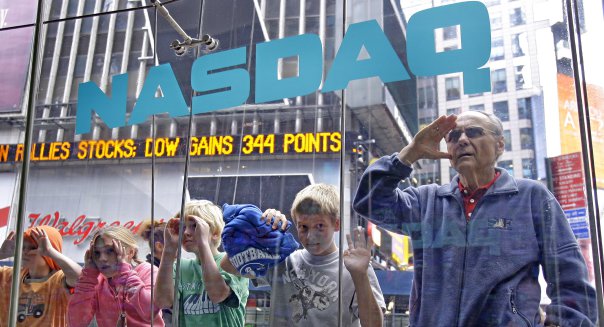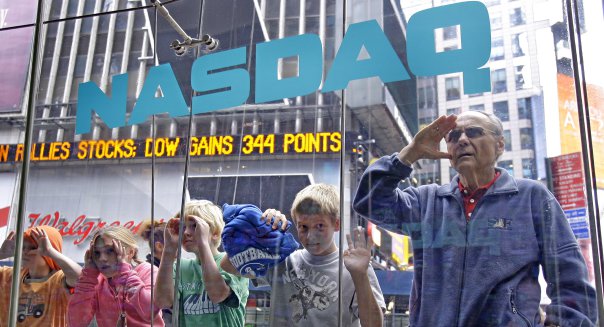
Today is a historic anniversary for Wall Street. On March 10, 2000, the Nasdaq composite index (^IXIC) soared to a record high, closing at 5,048.62. It has not set another all-time high since.
“It was a speculative mania for internet and dot-com stocks, essentially a bubble, a period of wild speculation,” recalls Wall Street veteran Hugh Johnson, now chairman of his own firm, Hugh Johnson Advisors. “Individuals and institutions were borrowing money to buy assets that were way overvalued, with the hope and the dream that they would become even more overvalued.”
While the Nasdaq has languished for 15 years, the Dow Jones industrial average (^DJI) and the S&P 500 (^GSPC) have soared. In the same span, the Dow has set 154 new record highs, and the S&P has posted 116 new highs, according to data from S&P Dow Jones Indices. The Nasdaq did come close last week, briefly topping 5,000 for the first time since the dot-com bubble burst, but it’s been a long and arduous climb back.
“Everybody knew it was over-extended, but no one knew how far it would do down. In the spring and summer of 2000 it fell from 5,000 to 3,500, and eventually down to 1,200,” said market historian Philip Roth. It lost 78 percent of its value over two years, far more than the other major indexes.
No Earnings, No Revenue, No Hope
Looking back it’s easy to see that many Nasdaq stocks had wild, crazy valuations. A number of prominent companies had no earnings, and in some cases, no revenue. They simply had a business model that seemed to promise future growth, and maybe “dot.com” attached to their name. (Think Pets.com.)
So this is probably a good time to ask: with the Nasdaq again hovering around 5,000, is it nearing another speculative bubble? Most analysts say that although the market could certainly take a turn down at any time after nearly six years of steady gains, they don’t foresee another major collapse.
“Back then, individual investors had the appetite and the means to speculate,” according to Johnson, “today they have neither. That’s one of the reasons the situation is different today.”
The creation of the dot-com bubble “showed up with many IPOs with insane valuation, but we have nothing like that now,” said Roth. “People went crazy for the IPOs in the late 1990s. People didn’t care about earnings. It was totally irrational.”
A Different World
Internally, the Nasdaq is much different now too. Even though it’s still referred to as a tech-heavy index, technology, and telecommunications account for a significantly smaller percentage of the index than it did 15 years ago, and due to acquisitions and companies that have gone bust (remember Worldcom?), there are 45 percent fewer stocks listed on the Nasdaq today.
The three biggest stocks on the Nasdaq in its heyday were Microsoft (MSFT), Cisco (CSCO) and Intel (INTC). All are still major players today, but their stock have still not recovered. Cisco is down 53 percent in the past 15 years.
Meanwhile, today’s Nasdaq is led by Apple (AAPL), which was an fairly insignificant PC maker then but is now the world’s largest company, as well as Google (GOOG) (GOOGL), which very few people had even heard of yet, and Facebook (FB), which wasn’t born until 2004. These are companies that now have billions of dollars in profits each year.
Analysts say that today’s Nasdaq is much more mature than it was 15 years ago. “We’re approaching the same level,” said Johnson, “but the level of speculation is not even close.”
•How to Get the Most From Your Airline Miles
•Parental dilemma: Save for kids’ college fund or retirement?
•Weddings Cost a Small Fortune – for the Guests, Too


Leave a Reply